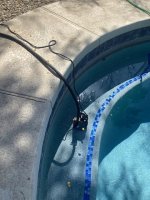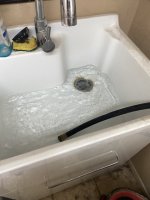Thank you for respondingI would test CH again, just to confirm the 1575 is correct. That's one of the highest I recall seeing, but if correct, would help explain the staining and scale.
You'll need to address the CH and CYA, at the same time, with a water exchange. By effectively dumping most of the problem water, you'll set your self up for better success, and easier management. Once you confirm CH, report back, but CH will dictate how much replacement you need. The good news is that replacement of water is super easy, nor that expensive.
TA is not a huge issue and will likely reduce with water exchange - TA simply encourages pH to rise. You then add acid, pH rises again, and you repeat process. There's no need to be aggressive, just let it change, add acid, rinse and repeat. You'll eventually find the point where the TA is happy and pH stops changing.
Once you've replaced water to get CYA and CH to normal ranges, you might consider a small SLAM, but with mostly fresh water it'll be easy.
So the CH & CYA is step #1 - Gotcha. Off to read how do that and how much I need to replace



